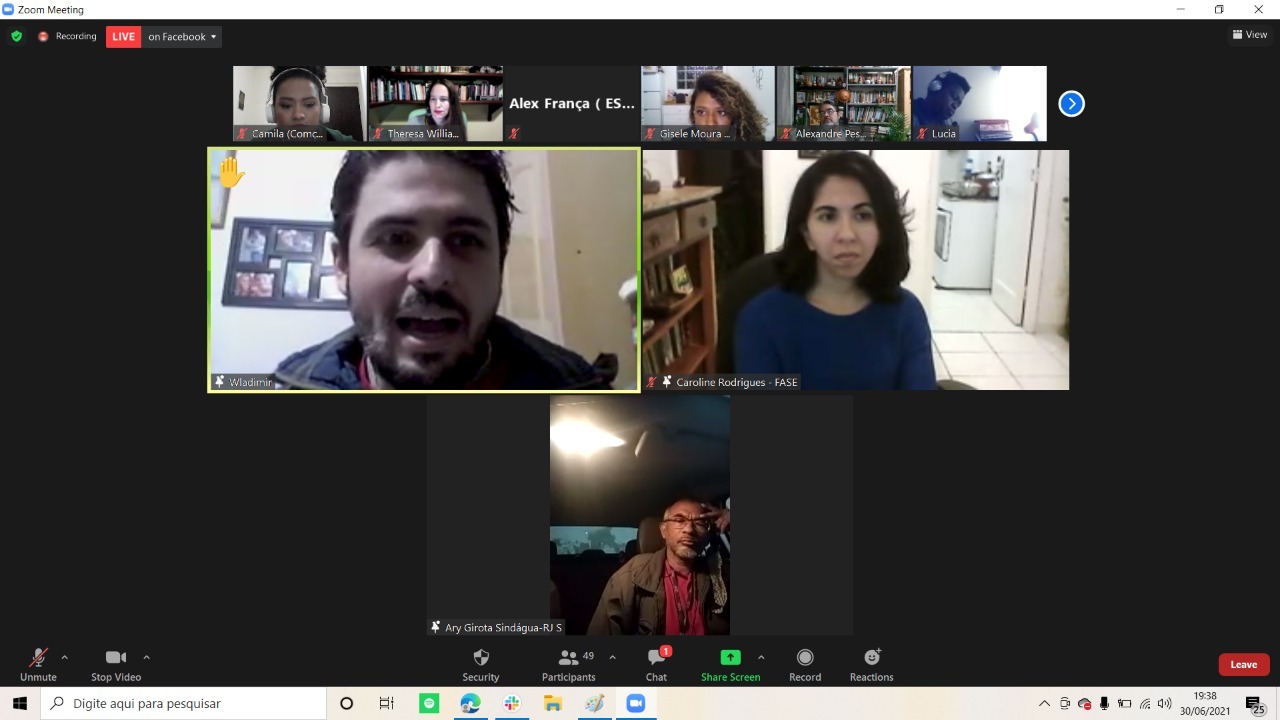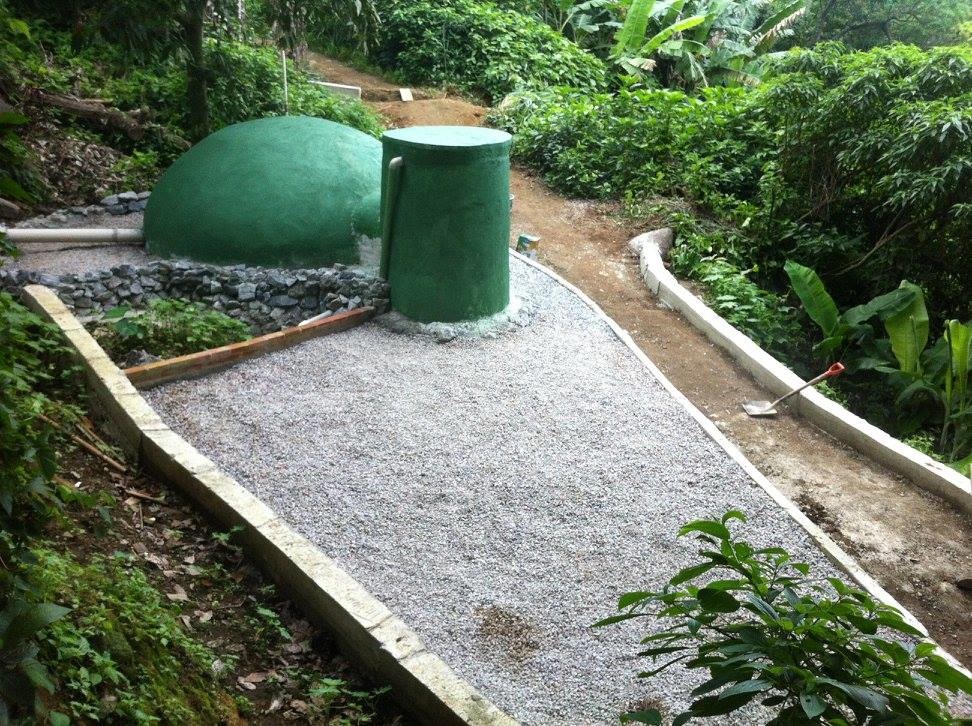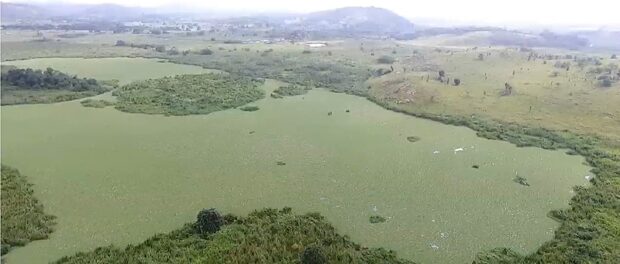
 This is our latest article in a series created in partnership with the Behner Stiefel Center for Brazilian Studies at San Diego State University, to produce articles for the Digital Brazil Project on human rights and socio-environmental justice in the favelas for RioOnWatch.
This is our latest article in a series created in partnership with the Behner Stiefel Center for Brazilian Studies at San Diego State University, to produce articles for the Digital Brazil Project on human rights and socio-environmental justice in the favelas for RioOnWatch.
On June 30, the Working Group on Water and Sewerage and the Participatory Public Policy Front, both part of the Sustainable Favela Network (SFN)*, organized the public online debate “Community Control Over Water, Sanitation and Privatization: The Sustainable Favela Network Discusses Water.”
 The aim of the event was to raise awareness about the importance of water and to create proposals and actions for community control over a basic resource that everybody has a right to. The online event was organized in a fishbowl format allowing all participants to speak and hold conversations during the event. To explain the format, SFN articulator Camila Moreno told the audience to “imagine a room with chairs in a circle, and three in the middle, occupied by people who have put themselves forward to debate the subject proposed: this is the ‘fishbowl.’ Those on the three chairs are allowed to speak for a minute and a half, and if they’re asked question, they can have another minute and a half to reply. At any time, anyone in the audience can raise their hand to take part in the fishbowl and have their turn to speak. This person will substitute the participant who has been in the fishbowl the longest. The ‘fishbowl’ will keep changing, with three different people having a conversation at a time.”
The aim of the event was to raise awareness about the importance of water and to create proposals and actions for community control over a basic resource that everybody has a right to. The online event was organized in a fishbowl format allowing all participants to speak and hold conversations during the event. To explain the format, SFN articulator Camila Moreno told the audience to “imagine a room with chairs in a circle, and three in the middle, occupied by people who have put themselves forward to debate the subject proposed: this is the ‘fishbowl.’ Those on the three chairs are allowed to speak for a minute and a half, and if they’re asked question, they can have another minute and a half to reply. At any time, anyone in the audience can raise their hand to take part in the fishbowl and have their turn to speak. This person will substitute the participant who has been in the fishbowl the longest. The ‘fishbowl’ will keep changing, with three different people having a conversation at a time.”
The live event had a special guest to help inform the audience and make the meeting more dynamic: Alexandre Pessoa, professor and researcher at the Joaquim Venâncio Polytechnic School of Health at the Oswaldo Cruz Foundation (Fiocruz). Taking on the role of the fishbowl’s “sea urchin,” Pessoa opened the event with a provocative speech. One of his themes was learning about the interconnectedness of human beings and nature through the pedagogy of waters. The professor also highlighted that in order to better understand the privatization of CEDAE (Rio’s water and sewage public utility) it is important to understand the National Water Resources Plan, implemented through the National Water Security Plan (PNSH), which aims to guarantee strategic water infrastructure in every region of Brazil.
Pessoa also said that the PNSH aimed to avoid natural disasters, such as flooding, guaranteeing that such events would be prevented from affecting current and future generations. “I believe this Plan is still focused on ‘gray engineering’ (as opposed to ‘green engineering’). It made no use of ecological infrastructure; it did not take more current points of view into account. It does not propose social technologies… The state of Rio has a water security policy and is going to implement a state water security plan. The problem is moving away from paper and creating real change: that’s the first challenge. In order to avoid water stress, it’s important to plan and to organize the city. It’s not enough to put the blame on rainfall. The problem is that there’s a quantity of water and a level of consumption. Supply and demand. So how can we work with this?” he asked.
Last year, the state government decided to change the regulatory framework and put CEDAE up for auction. Pessoa, who is also a specialist in environmental sanitation, said that the privatization will affect the local population in many ways, including in relation to sewage. “This is a good moment: basic sanitation in Rio has never been debated as much as it is now,” he said. “It’s a hot topic, we can’t let sanitation stay hidden under the ground. Thinking about basic sanitation doesn’t just mean preventing illnesses, it’s also about generating income and improving quality of life. This is a crucial perspective. Whether we’re talking about public sanitation, sanitation for the home or for the community, all of them depend on housing conditions. Sanitation alone is not enough. If we don’t have urban planning, how will we have sanitation? Sometimes [the utility] creates a [sewage] network but doesn’t link it up to the houses that are furthest away or the most precarious. Many houses don’t have bathrooms. If sanitation doesn’t reach everyone it can’t be called universal. The Public Prosecutor’s Office won their case in the courts and now CEDAE is obligated to make a contingency plan due to Covid-19. Without water, there’s no cleaning your hands and protecting yourself from the disease. Remember that water is not just for drinking, it’s part of every aspect of our lives,” Pessoa said.
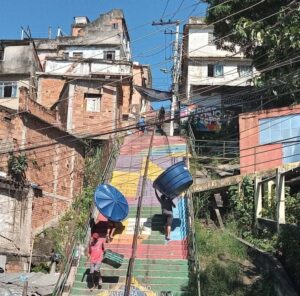 The next person to speak in the “fishbowl” was Alessandra Roque, a resident of the favela of Morro da Providência, in Central Rio, who shared her experience with water and sanitation where she lives. “We created a project called ‘Wash Your Hands,’ putting public sinks in the streets for people to use. We have a bigger problem in Providência: we don’t have water supplied to us every day. So, we created a reserve with a one-thousand-liter water tank, allowing people to wash their hands every day. Because how can you say, ‘wash your hands every other day?’ That’s not going to work.”
The next person to speak in the “fishbowl” was Alessandra Roque, a resident of the favela of Morro da Providência, in Central Rio, who shared her experience with water and sanitation where she lives. “We created a project called ‘Wash Your Hands,’ putting public sinks in the streets for people to use. We have a bigger problem in Providência: we don’t have water supplied to us every day. So, we created a reserve with a one-thousand-liter water tank, allowing people to wash their hands every day. Because how can you say, ‘wash your hands every other day?’ That’s not going to work.”
Roque spoke about an ecological sewage treatment technology that is already in place in Providência. “We have installed an evapotranspiration system to treat our sewage. It’s a possibility inside the favela. It’s viable, and the proof is that we did it… Some houses here are not linked to the public sewerage system because of the way they were built, which means that some can’t access the network. Why can’t the authorities install this kind of treatment system if we know it’s possible? We’re here, proving that it works.”
Rivers, Mangroves and Historic Problems
The Guandu River was a small river until the 1950s, when it received a water transfer from the Paraíba do Sul River, located in the municipality of Barra do Piraí, in the south of the state of Rio de Janeiro, feeding it with a large volume of water. Currently, the Guandu River supplies water to approximately 80% of the population of the Rio de Janeiro Metropolitan Region.
Near the municipality of Seropédica, the Guandu River meets four other water sources from Greater Rio’s Baixada Fluminense, namely the Queimados, Ipiranga, Poços and Cabuçu rivers. These four rivers are fed with waters from the Tinguá Biological Reserve and are pure and crystalline according to Wladimir Loureiro, a representative from the Rio Archdiocese‘s Pastoral of Integral Ecology. “These rivers are special; they are like rivers from paradise in which you can dip your hand and drink the water. When the rivers reach the Queimados industrial district they receive high levels of toxic substances and become impossible for human consumption. But nature is pure resistance. There is a lagoon area at the point where these rivers meet the Guandu, which includes the Guandu and Quiabal lagoons, where nature reacts to this toxicity and somehow manages to dilute it. It’s in these lagoons that nature itself, as a form of reaction, created geosmin. Through heroic efforts, CEDAE manages to treat this water with relative competence. However, for several reasons, the company decided to dam these lagoons with a construction that they call ‘protection of the water intake’.” According to Loureiro, this intervention is directly impacting dozens of families who make a living from fishing and from family farming. “These people had a decent life, but not anymore. They are invisible.”
The scenario described by Loureiro is similar to the situation observed in the mangroves of Rio’s West Zone, a topic covered by Heloísa Helena, Ialorixá (priestess in the Afro-Brazilian religions) and local activist. “The mangroves are being heavily polluted. The mangrove is a big symbol of resistance. I live close to a street called Canal Jardim do Piaí, which used to be called Canal 1. The canal filled up last year and is very polluted. A nursing home flooded because of the mangrove water spilling over. We’ve been managing to clean the area up, but we know that it won’t make a difference. I’m grateful to the partners who helped with the clean-up [of the mangrove], but we need a larger structure,” she said. In her research, she found public documents from the Growth Acceleration Program (PAC), where she saw the name of Rua Levy Neves, a road cut by the canal, in the neighborhood of Guaratiba. “I keep thinking to myself, this is such an old story. Why hasn’t it been resolved? Why did we let it get this far? This canal empties into the Brisa beach and starts, more or less, in Santa Cruz. Its waters pick up sewage from the entire population, so they are really dirty!”

Water pollution was also mentioned by Irenaldo Silva, a nurse technician and former president of the Pica-Pau Residents’ Association, in Cordovil, North Zone. He shared a concern that he has experienced in his neighborhood and that is familiar elsewhere: the lack of connection between the sewage systems in individual homes and the [public] sanitation network. “My concern is not a new one: [the community] create[s] a sewage network, but this sewage is dumped into the river, or in a ditch. You basically replace one problem with another,” he said. “Here in Pica-Pau, a [public] sewage treatment system was created on the Irajá River, in 2015, so that the [community’s] sewage could [finally] be treated there and then be emptied clean into Guanabara Bay. It turned into a white elephant, as it’s stopped working.” Silva also mentioned the ongoing cases of intestinal infections due to people consuming contaminated water. “The sewage is contaminating drinking water, people are drinking sewage water,” he said.
Decentralized Solutions Must Go Hand in Hand with Universal Access
Despite its historic lack of basic sanitation, the city of Rio de Janeiro was once a pioneer in sewage treatment. Currently, according to the Industry Federation of the State of Rio de Janeiro (Firjan), with research based on the National Sanitation Information System (SNIS), only 67% of the population of Rio has sewage collection. That means that a third of the population does not have safe sanitation. To try to change this reality somewhat, Tito Cals and Leonardo Adler started to work on ecological sanitation in favelas and rural communities in the state of Ceará, in the Amazon, and in Rio. In Rio, the project linked up with the already established demand for an ecological sewerage system in the community of Vale Encantado, in Alto da Boa Vista, in Rio’s North Zone. The president of the local cooperative and of the residents’ association, Otávio Barros, joined up with Cals and Adler, and together they created a biosystem for treating domestic sewage, composed of a biodigester and a rootzone. A biodigester functions like a large tank, where the organic material deposited is consumed by bacteria and at least three byproducts are created from the process: biogas, biofertilizer and compost.
According to Cals, working with the community was fundamental for the installation of this type of system. “We found a way of working in which the residents participated in every stage of the project, especially during execution. The aim is for people to participate, to understand and become agents of change, being able to replicate this technology [elsewhere]. This was the format we found to link academic knowledge with our desire to create social impact. Vale Encantado was the first favela that we worked in. We are very grateful to Otávio for having come to us in 2011 with the aim of solving the [community’s] sewage problem,” said Cals. “We are still on this journey, but we are sure that these decentralized solutions are not the only ones. They can work alongside more centralized solutions. Like in the cases of the favelas of Rocinha and Maré, where in some areas there’s no space to build a biosystem, so the only way forward would be to centralize treatment and take the sewage away to a treatment plant. We are aware that ecological sanitation can complement universal access to sanitation, which is something that we’re unfortunately not close to achieving,” concluded the environmental engineer.
Floods Caused by Poorly Executed Construction
Heavy, frequent rain goes alongside a lack of maintenance of drains, infrequent waste collection and irregular disposal. Other factors can also be added to the mix, such as the silting of canals and rivers. These are some of the elements that damage and lead to historic problems for Rio’s water systems. Tuned into possible improvements for their neighborhoods, municipalities and the country, women are on the frontline to demand that they are truly given access to their social rights.
A community leader from City of God, in the West Zone, Iara Oliveira, is co-founder of an organization called Alfazendo. She recalls with affection the history of the bodies of water that run through her community, as well as the interventions they have undergone. “The Rio Grande, a river that cuts through City of God, is born in the Pedra Branca State Park, comes from Bangu, and runs through Jacarepaguá supplying water to all of the West Zone. So, the city government started a process of basic sanitation in the favelas and ended up dumping the sewage into the storm drains. When City of God was being built, we had a sewage treatment plant inside the neighborhood. So all the sewage that came from people’s homes was treated and was then emptied into the lagoon. Over time, the city and the state government, who were responsible for looking after this system, closed it down, but kept the place there with sewage dammed inside City of God,” recalls Oliveira.
After the sewage treatment stations were shut down, floods became more frequent in the community. Oliveira remembers two of them killing favela residents. “When I was a child, from 1966 up until I was about 10 or 11, we used to swim in this river, there were fish and plants growing. Now it’s a dead river,” she said. “City of God is surrounded by rivers that could be maintained and revived. When we talk about water scarcity, about sewage issues, we see that the city suffers from a lack of planning. Not all favelas and houses have water tanks; this is a reality for favela residents. So, when we run out of water, we really run out.”
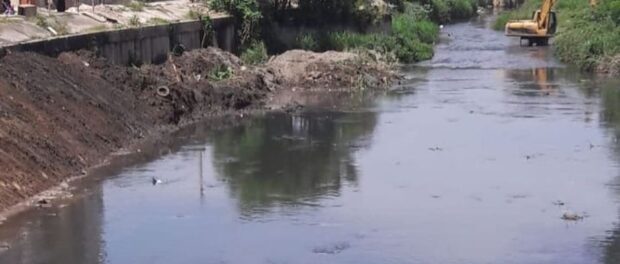
The lack of separation between river water and wastewater causes sewage floods and leads to other consequences. Oliveira explained that, “It’s a struggle. Rio de Janeiro urgently needs a project and a review of its sanitation systems. They came up with a stopgap operation here in City of God. The city government got rid of the old sewage treatment network and put in a new one that is even worse than the old one, because now when it rains, everything floods. As citizens, we need to supervise this, we need to look at new technologies so that future generations think about water as a social right,” she concluded.
Geiza de Andrade, who also lives in Rio’s West Zone, is a socio-environmental educator and a resident of Vila Kennedy. Andrade spoke about the community’s experiences with official construction works, which usually cause problems and damage for favela residents. “Even when residents told him what was going on, the City’s engineer wouldn’t listen to anyone, although we had meetings… While the construction was taking place, they [the City’s workers] weren’t in the area, and we watched what happened: people just covered up the storm drains. Now, within a three-block range, we can only find one drain, and it’s quite far away. So, places that didn’t flood started to flood, and it was a mess,” said Andrade. “It’s really sad when we know the route that water takes, and people want to build a barrier. I always talk about the importance of water with the kids at school, about rainwater and the journey it makes… Children in the favela know how important water is because there’s been a lot of deforestation. And that’s another worry we have, that with fewer trees in the forest, water runoff will be even more intense. So, we’ll see floods in places where we didn’t have them.”
Watch the Interactive Live Event Here:
About the author: Born and raised in Vilar dos Teles, São João de Meriti, Beatriz Carvalho is a journalist, media-activist, feminist, and founder of Mulheres de Frente.
*The Sustainable Favela Network (SFN) and RioOnWatch are Catalytic Communities initiatives. The SFN is supported by Heinrich Böll Foundation Brasil.

